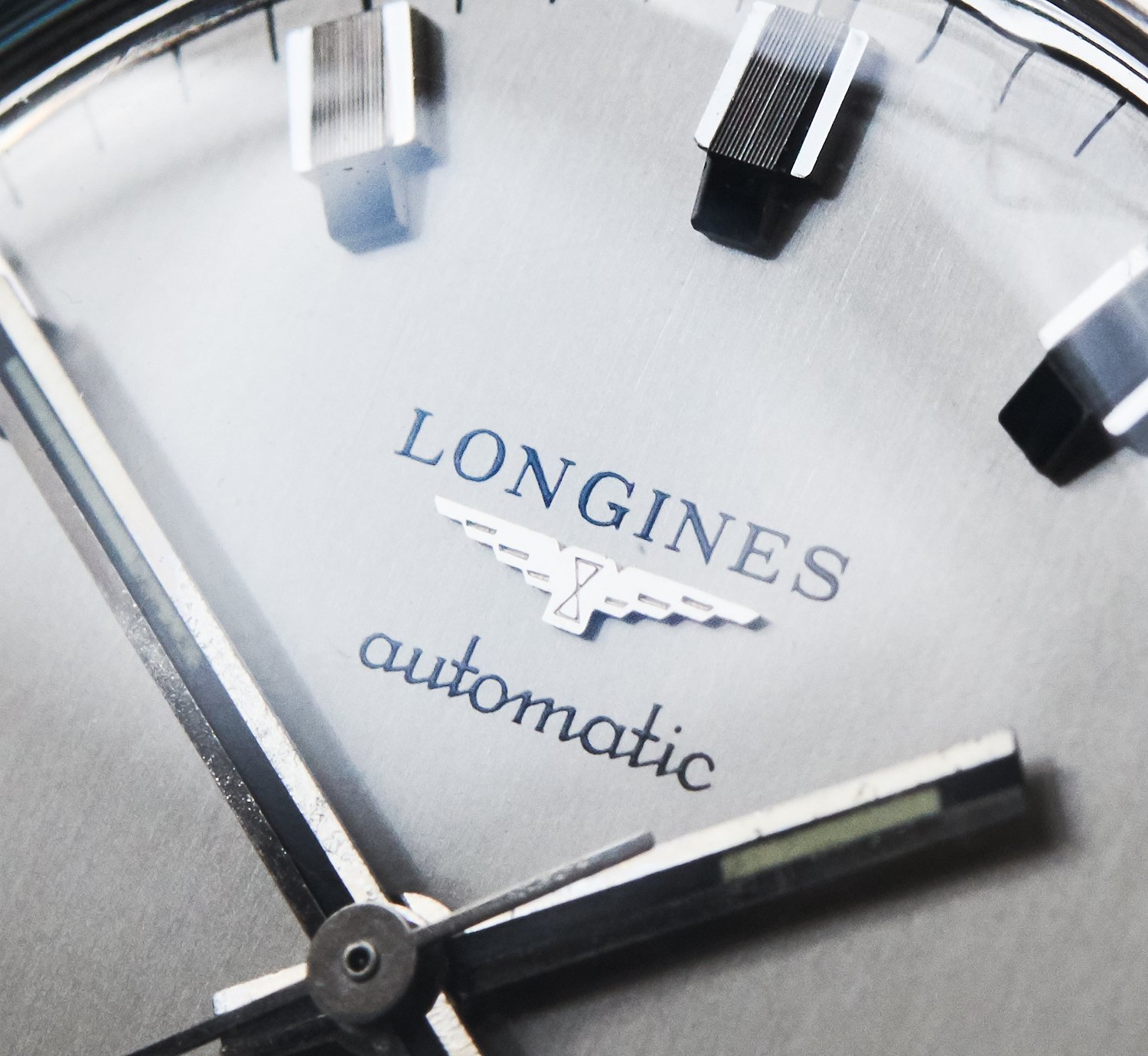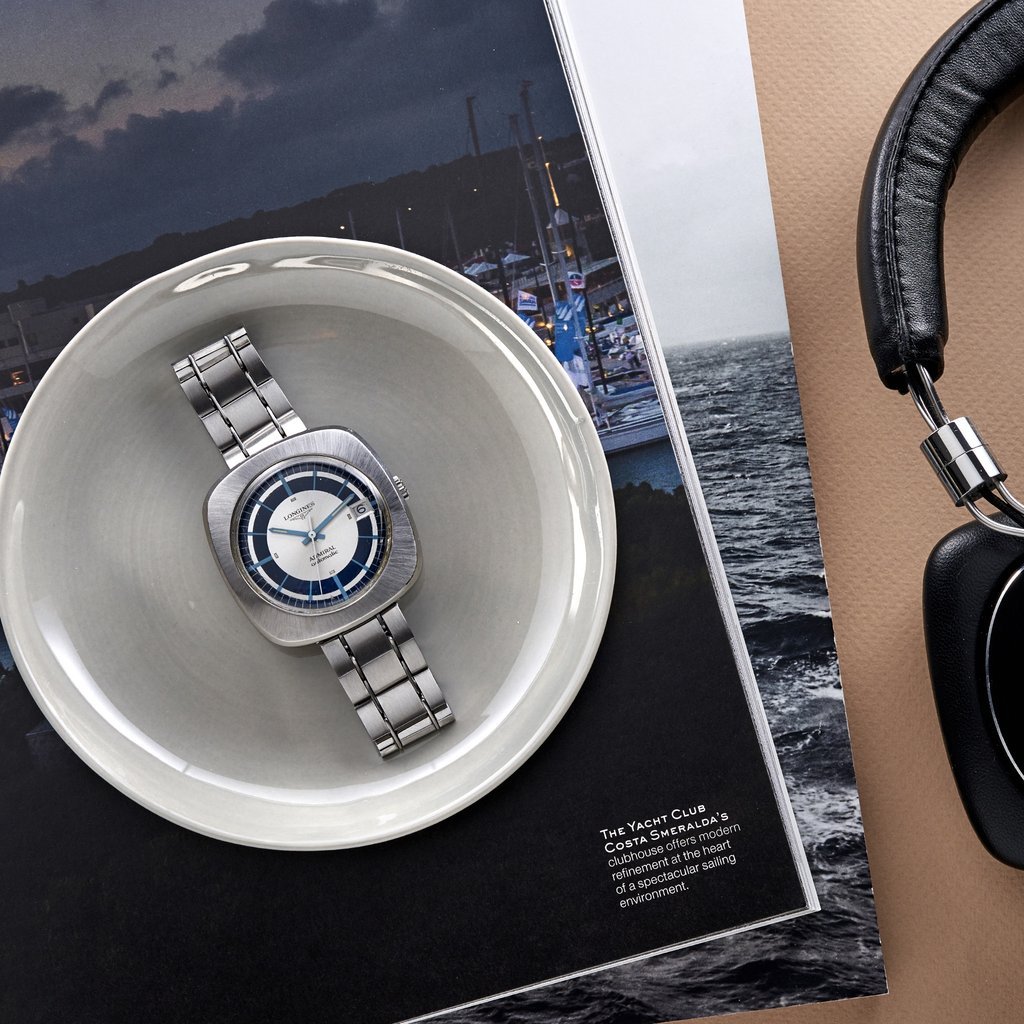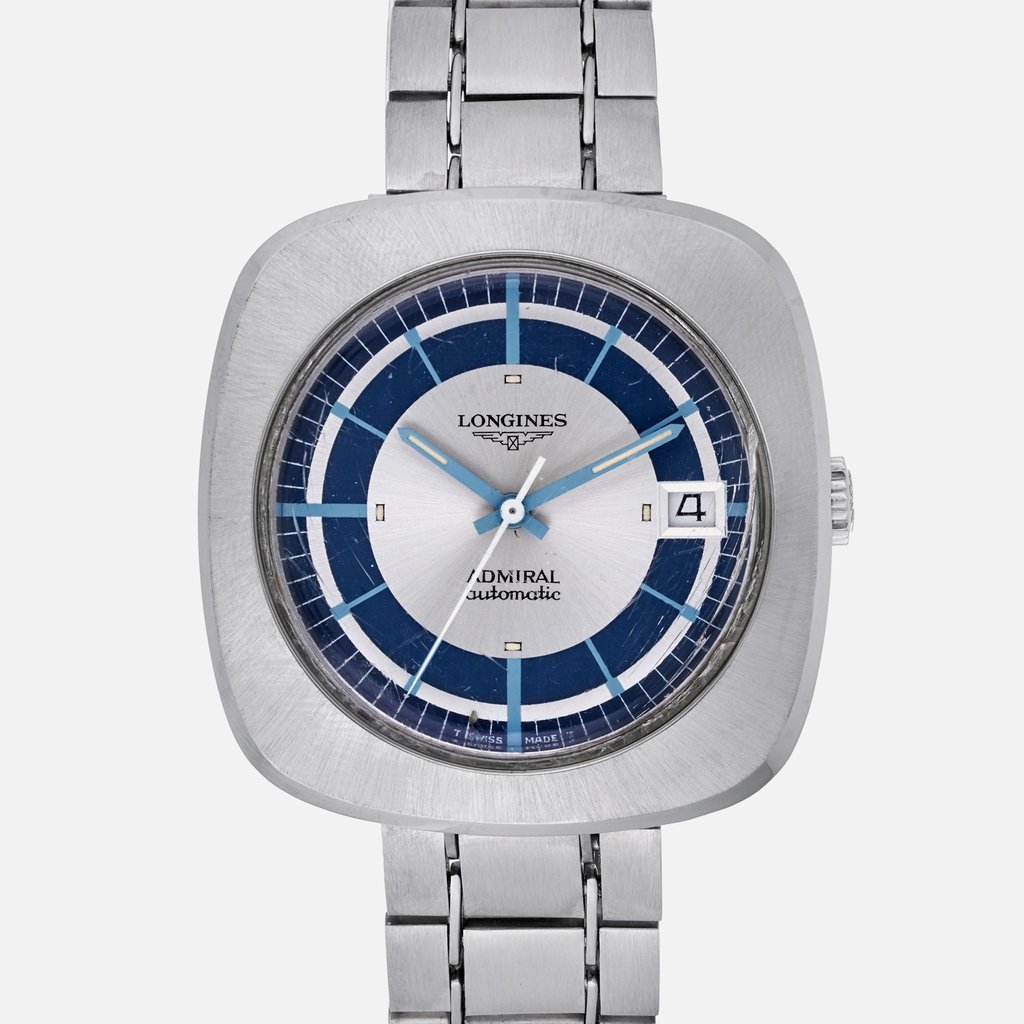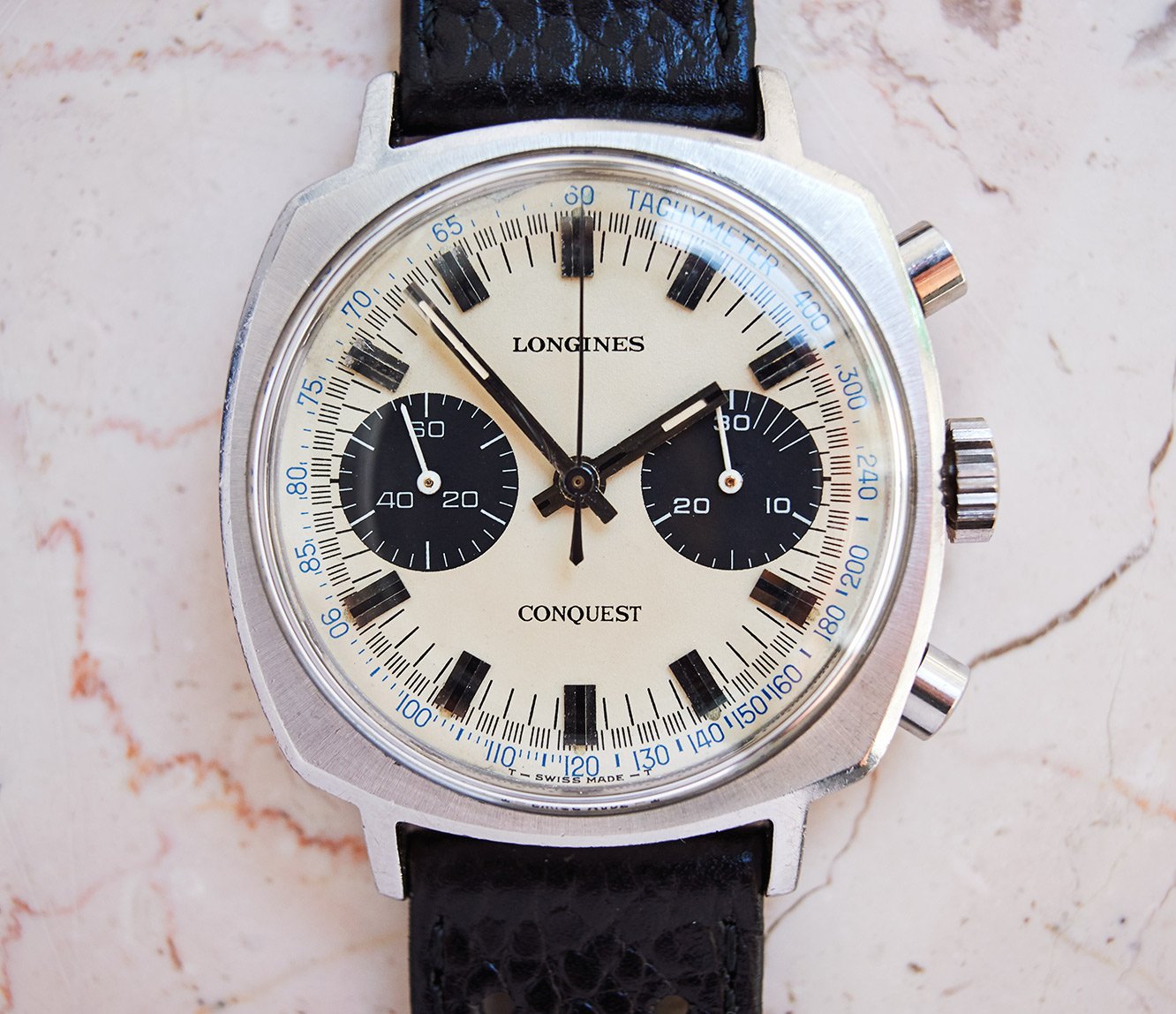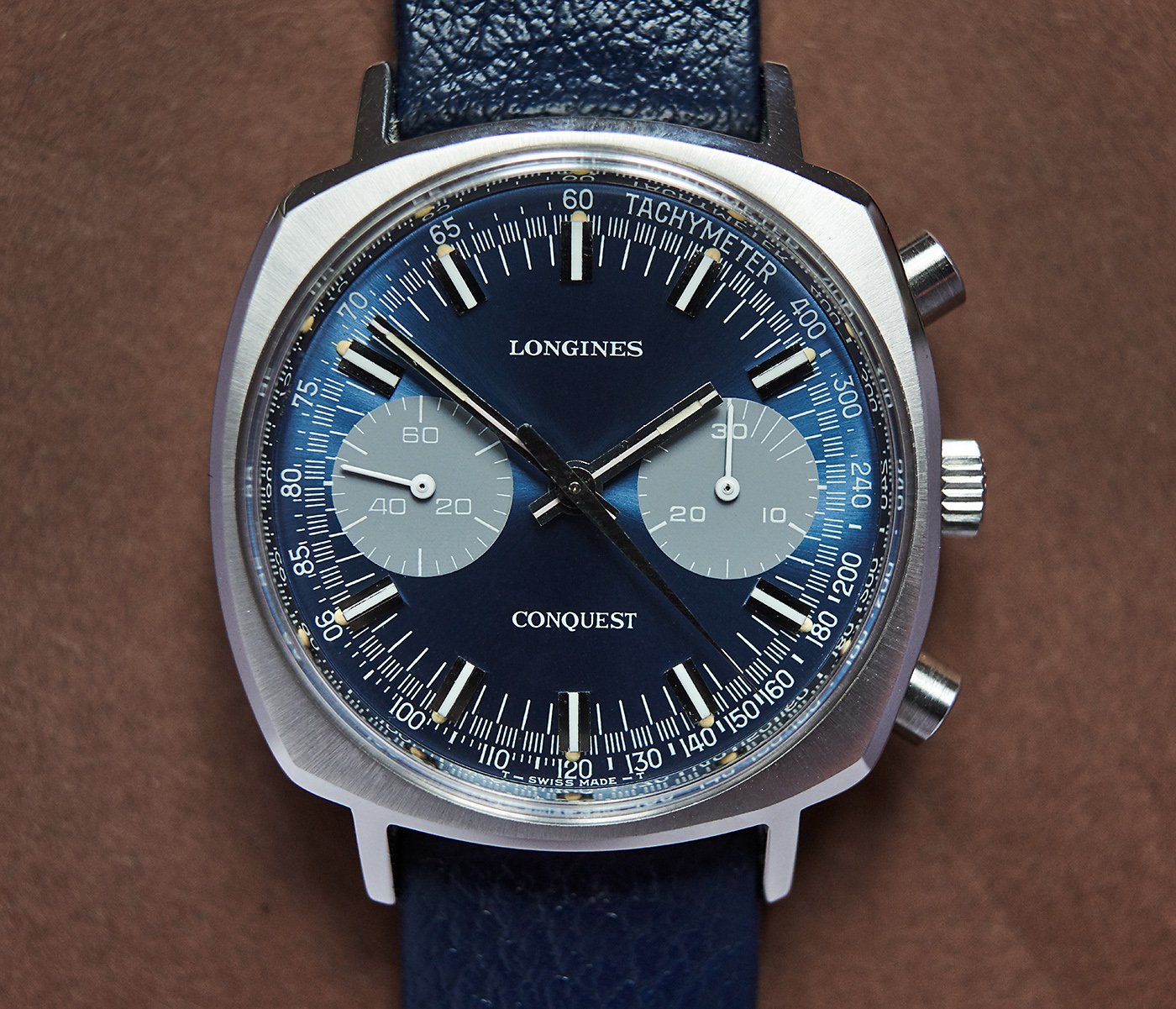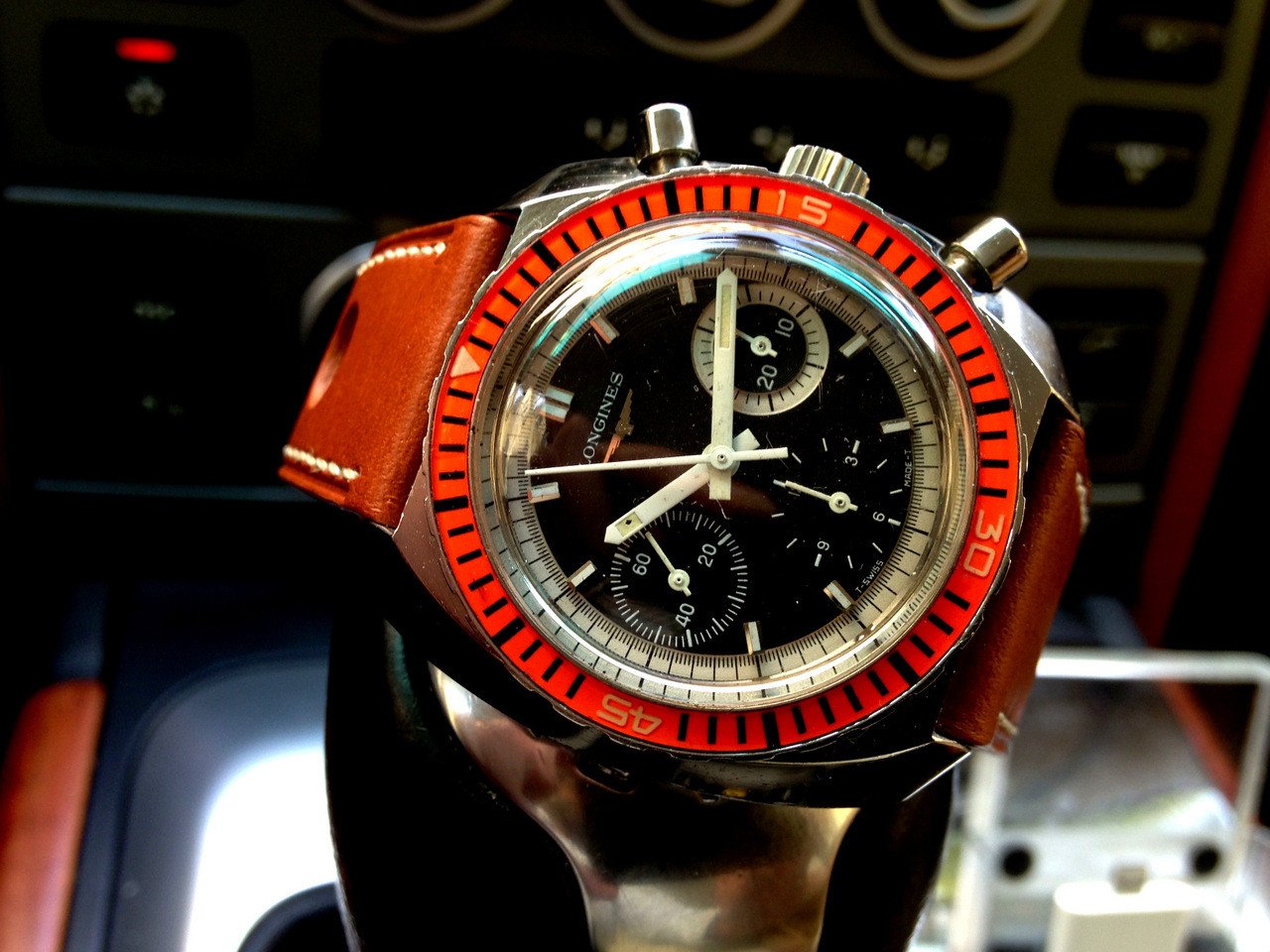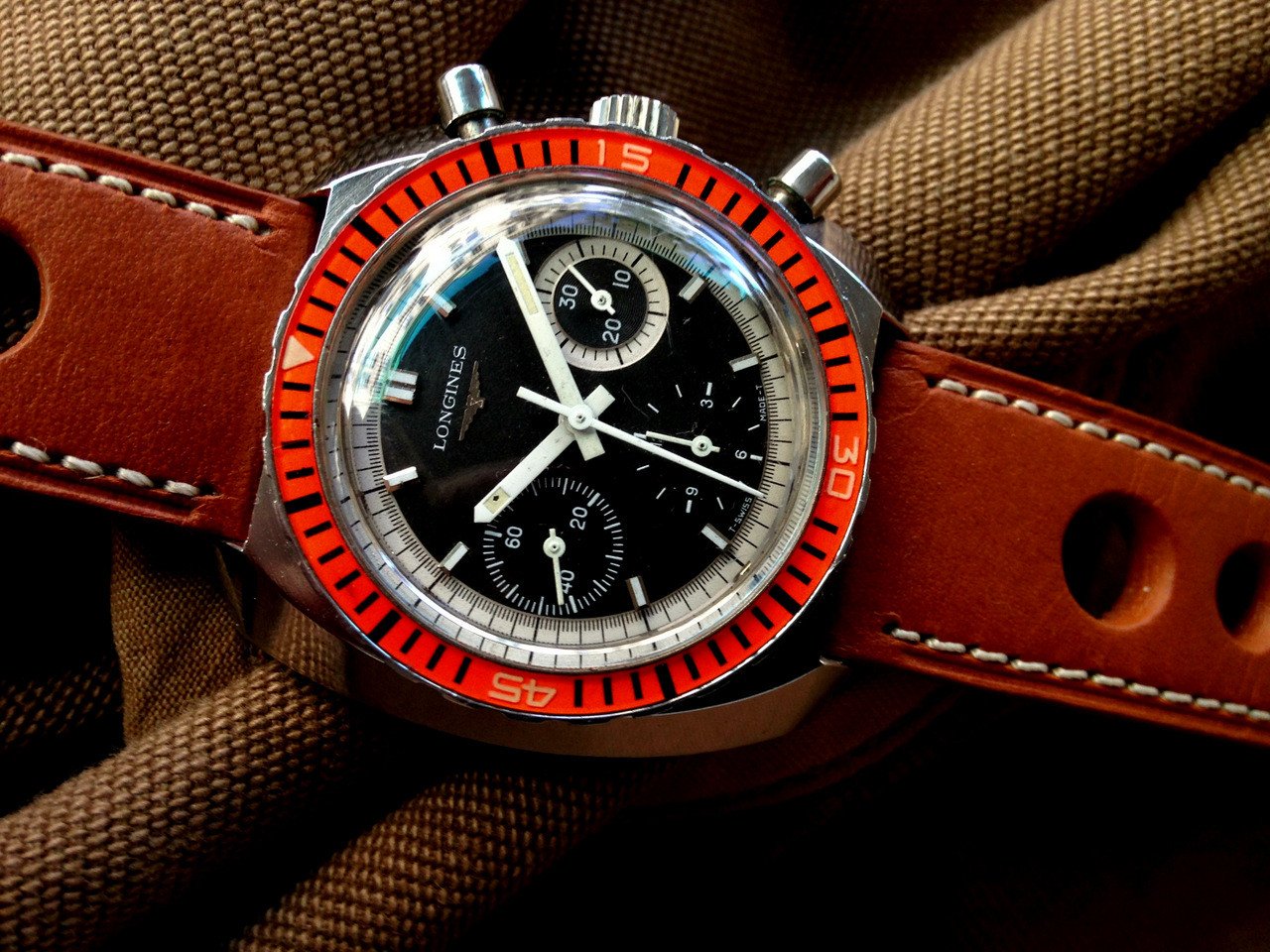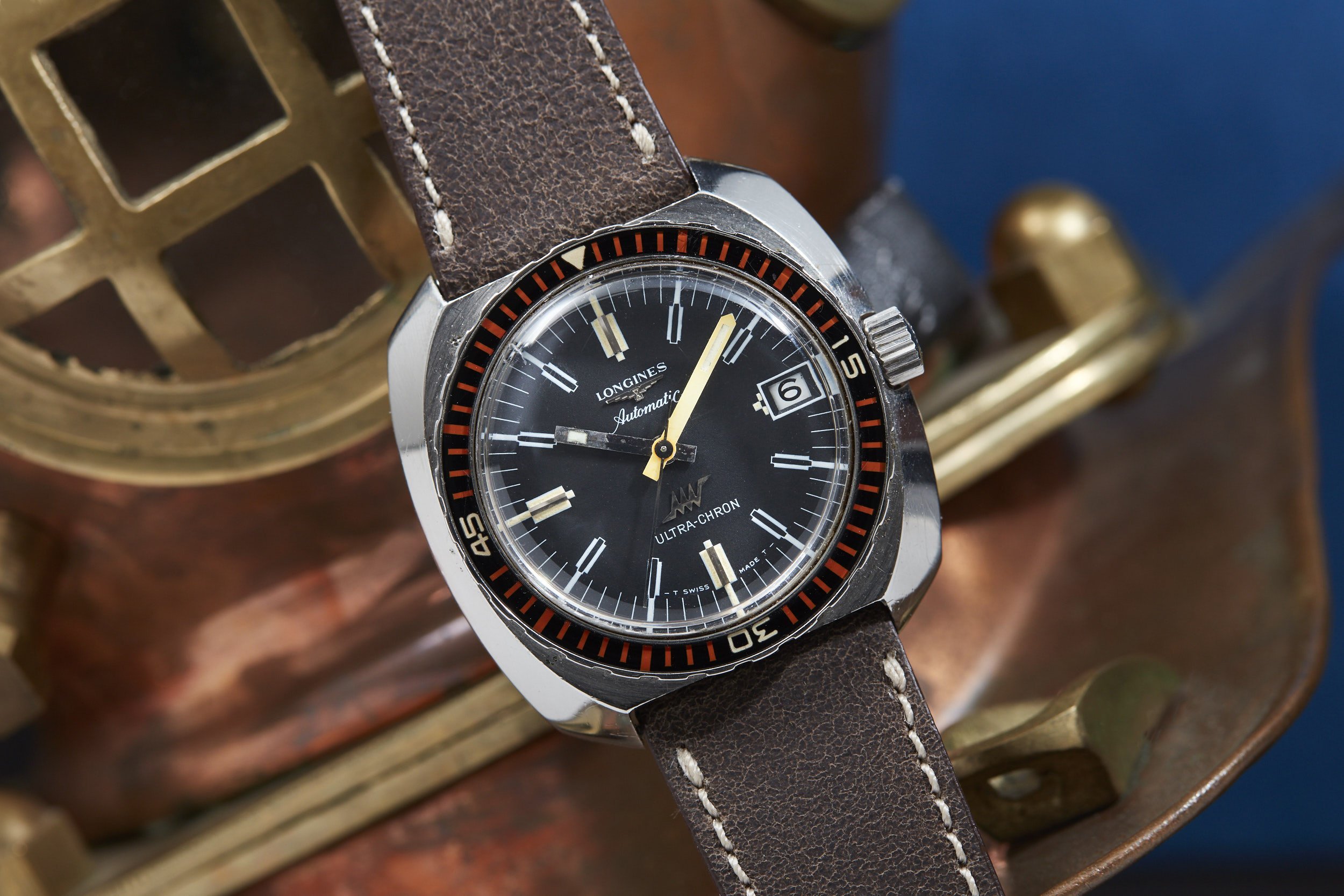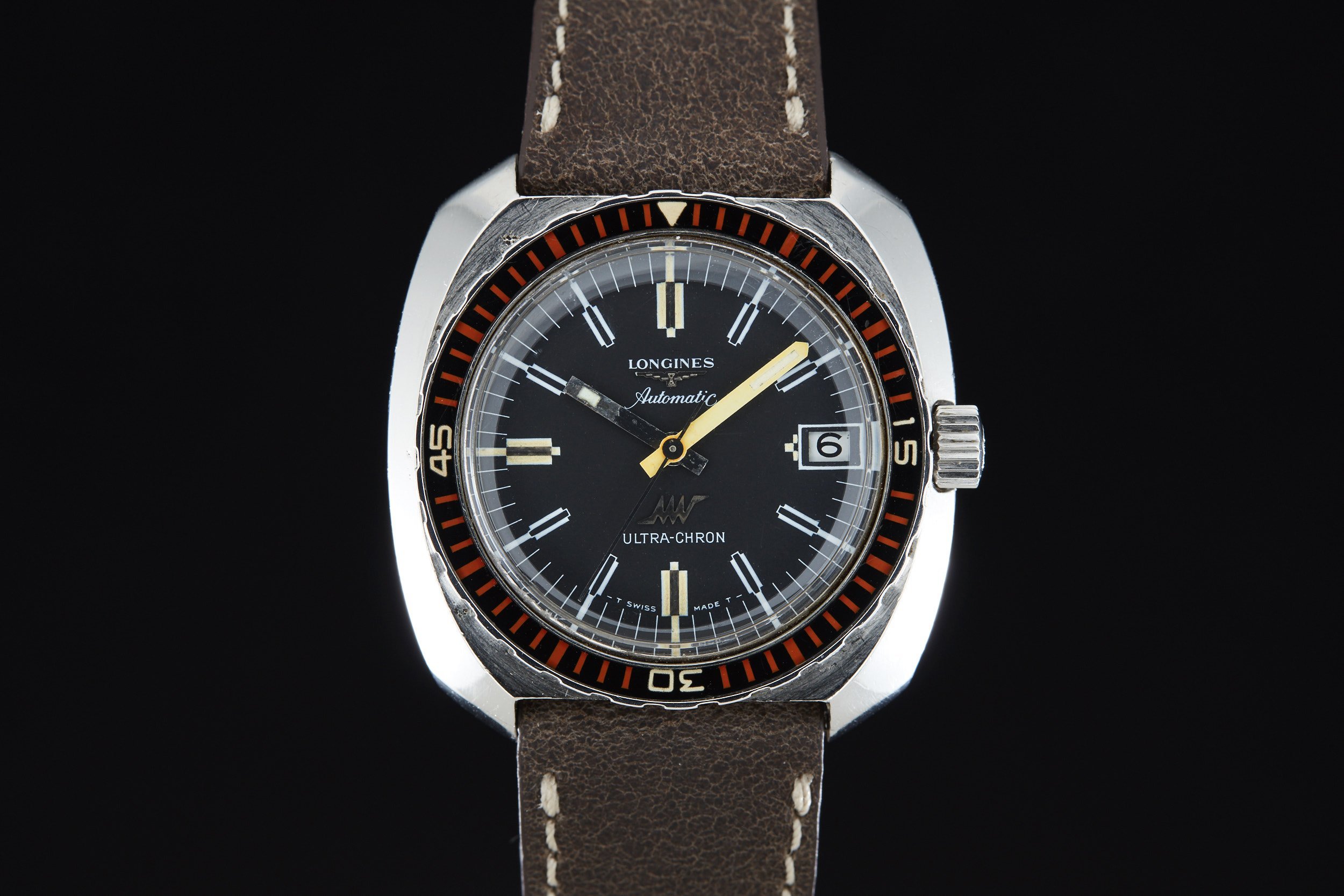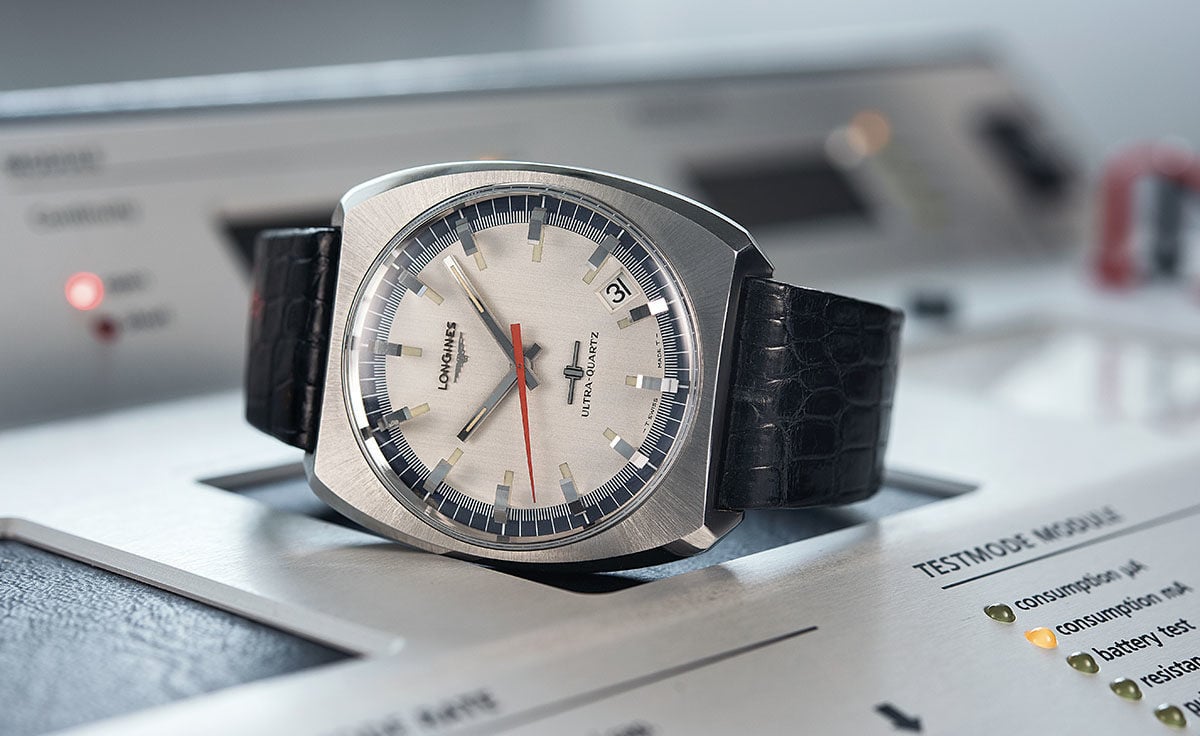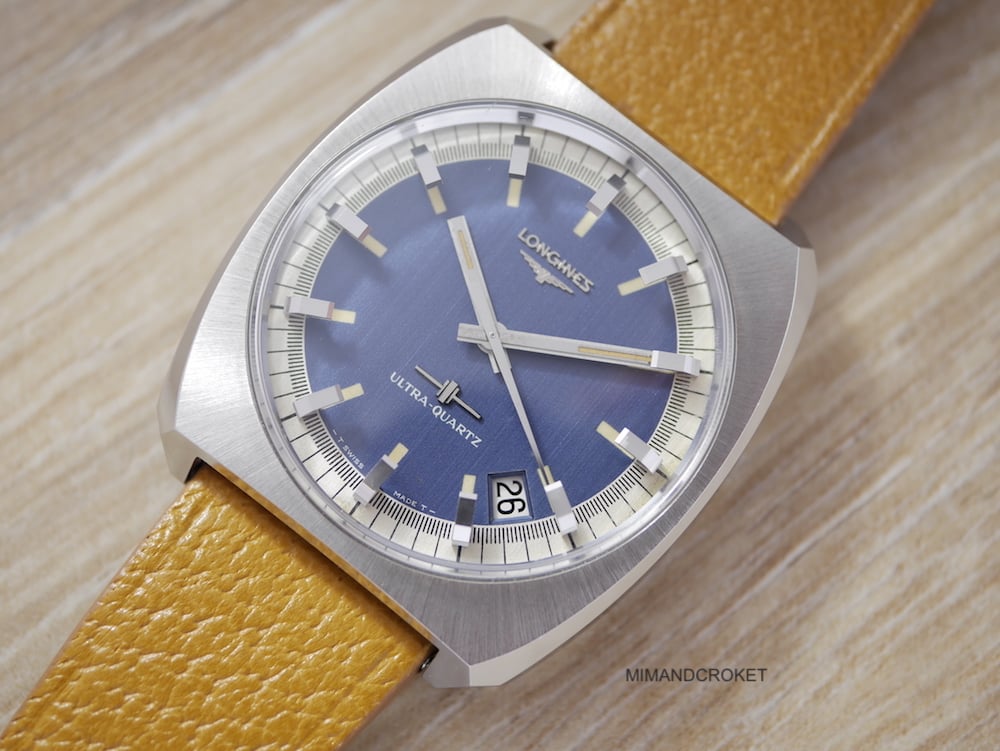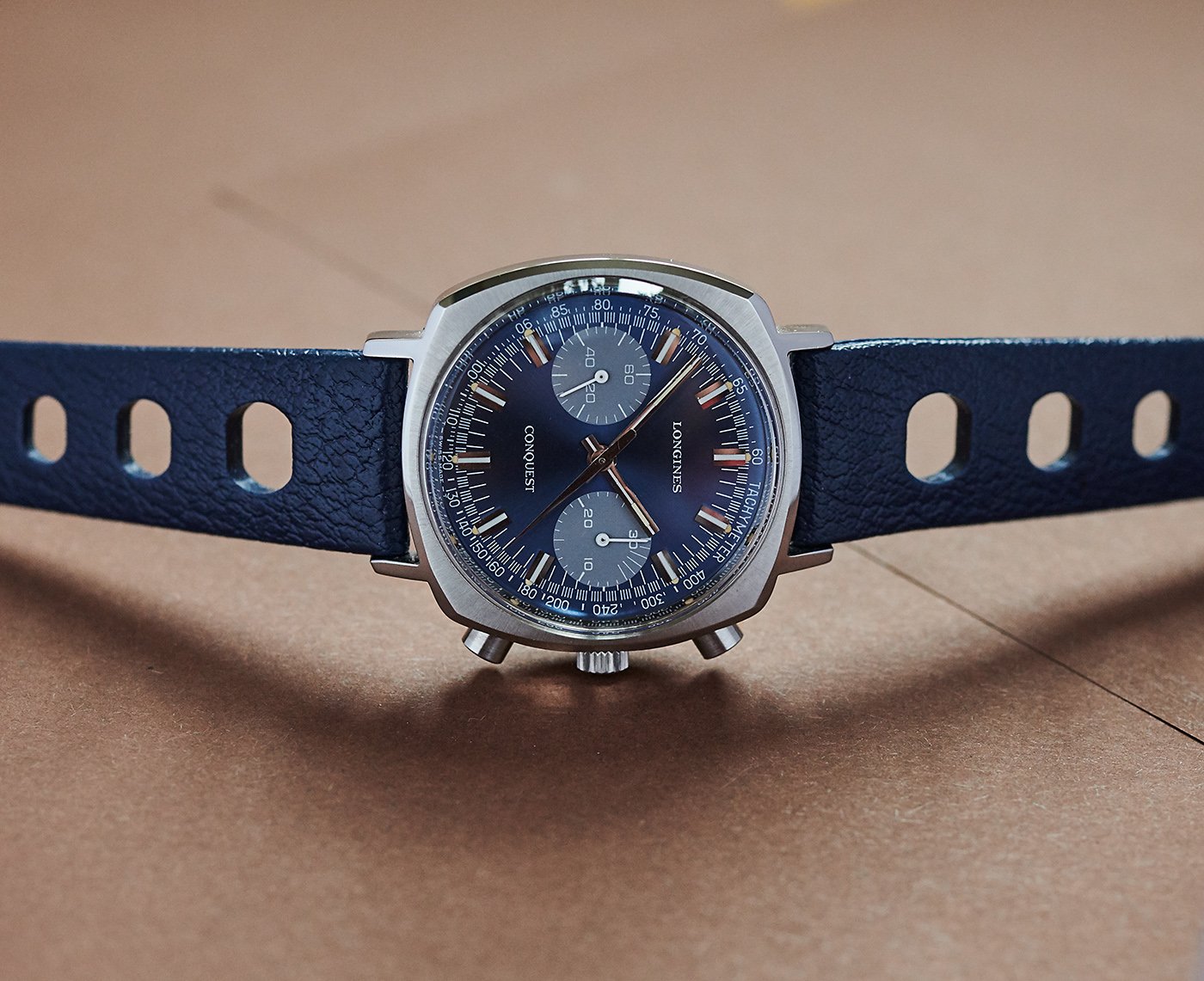Buying Guide: The Best Longines Watches From The 1970s
We like to talk about vintage watches a lot within the Fratello team. While the daily routine is largely focused on the most recent developments in the world of watches, the most fun for many of us lies in the world of vintage watches. It’s a world full of history, remarkable watches, incredible stories, and quirky details. It inspired us to come up with a series of articles focusing on the best watches per decade from a select group of brands. Some of them priceless, some of them still affordable. In this installment, we will take a look at the best Longines watches from the 1970s.
In the 1960s, we witnessed developments that challenged the status quo of watch design forever. The sheer amount of watches that pushed the visual boundaries of what was known and accepted was enormous. On top of that, we also saw great technical developments with the race to produce the first automatic chronograph as the most significant of the decade. The 1970s took it to a whole new level. When it comes to watch design, the seventies can only be described one way: no holds barred! The number of extravagant watches is countless. The quest for new shapes, the introduction of explosive colors, and the introduction of the automatic chronograph movement marked a wild time in the watch industry. It was a time that gave us some of the best collectible vintage watches ever made.
Longines in the 1970s
Like so many other brands, Longines was hit hard by the quartz crisis. But it didn’t mean the brand gave up. During the 1970s, the brand showed how inventive and great a brand they were. In 1977 Longines introduced the Calibre L990 that was the thinnest automatic movement featuring a date at just 2.95mm. It was the last completely in-house produced movement from the Longines factory in St. Imier, and it was an incredible movement that Lemania actually continued producing under their own name as the Lemania 8810
But the brand’s focus was not just on mechanical watches. The brand also focused on developing new quartz watches. The most spectacular came in 1979 when Longines introduced the Longines Feuille d’Or or Gold Leaf in English. This spectacular rectangular gold watch was just 1.98mm thick and still looks spectacular. Unfortunately, not that many were produced, and a minimal number actually survived the last 40 years.
These are just two examples of Longines’ attempts to innovate and survive everything that was happening. Next to that, the brand continued to produce some amazing watches that combine handsomely good looks with fascinating movements. So let’s take a look at five of the best Longines watches from the 1970s.
The entry-point — Longines Admiral Ref. 8581-2
If you are on the lookout for some proper 1970s style, look no further. The really 1970s Longines Admiral ref. 8581-2 has that seventies style in abundance. If you read the previous two buying guides for Heuer and Zenith, you must have noticed quite a few iconic watches with square and TV screen cases. This Longines Admiral ref. 8581-2 might not be that much of an icon, but it also features a square 39mm cushion-shaped case that looks really nice. What I particularly love about the case is the finish. Like the Zenith A3817 and A3818 discussed in last week’s Zenith article, the case features a brushed radial finish that looks amazing on square and rectangular cases. The white and blue dial creates a beautiful ’70 style watch with some serious nautical vibes.
The Admiral line of watches was introduced in the late 1950s and until the 1970s consisted mostly of classically styled watches. A Longines Admiral was not only easily recognizable by its name. Many of the models also feature 5 stars in line on the dial. Often they were placed on the lower half of the dial just above the 6 o’clock marker. But in the 1970s, Longines players around with the placement of the stars. The designer decided to replace the 9 o’clock marker with the five stars and the Admiral name underneath on some dials. It’s a pretty bold move, but on some watches, it works well. For this ref. 8581-2 Longines decided to remove the five stars completely
The high beat Calibre 431
Inside the cushion-shaped case, you will find the automatic Longines Calibre 431. It’s a high beat caliber that operates at 36,000vph and features a date at 3 o’clock, and has a power reserve of 40 hours. The Calibre 430 series was Longines’ first attempt at a high beat 36,000vph movement. In 1972 the movement was replaced by the 665X series of movements running at 28,800vph. The Calibre 431 movement has been known to run very well, but it definitely needs regular servicing to keep the great accuracy. But if you do, it can be a great movement to enjoy for a long time.
What I love specifically about this Admiral ref. 8581-2 is that it still has the original bracelet. Longines also produced a blue dial version and version with a black and white dial with orange accents. While they are a bit more colorful, I love the simplicity of this dial execution combined with the case and the bracelet. Finding this specific configuration is tough, though. The other two versions are easier to find. The Longines Admiral 8581-2 models available go for roughly 800–2,000 Euros depending on the condition. That’s not too much money if you are in the market for a watch with some serious swagger and an in-house movement from the 1970s.
My Choice — Longines Conquest ref. 1543-1
My pick for this list may look familiar. And you’re right. It looks a lot like the Heuer Camaro that was produced from 1968 until 1972. I feature it in the article about the best Heuer watches from the 1960s. The Longines Conquest 1543-1 actually shares the same 37mm stainless steel case with the Camaro. When it comes to dial designs, the 1970s Longines Conquest had two very interesting versions. The first features a panda dial with two black sub-dials and a blue tachymeter scale. However, it looks like the Heuer Camaro 7843 with a bit more color and no date at 6 o’clock. And those two differences make this the better-looking watch in my opinion.
The second version is even better, in my opinion, because it features an amazing sunray blue dial with grey subdials. Almost five decades later, that dial still looks as crisp as when it was first released. But this dial variant is scarce and therefore hard to find. Additionally, the panda dial version is more iconic and popular amongst collectors. It’s also why Longines decided to release a re-issue of the panda dial version in 2013 called the Longines Heritage 1973. This re-issue, however, features a beefed-up 40mm case and a different movement with a third sub-dial and a date.
The better Camaro
When it comes to status, don’t think for a second that the Longines Conquest 1543-1 was the Camaro’s little brother. Many collectors actually call this the “better Camaro” because of its gorgeous manual winding Longines Calibre 530. The movement is a variation of Longines’ legendary 30CH movement. Longines produced two variations of the 30CH with the Calibres L530 and L538. The latter was used for the Nonius I discussed in the Heuer article I referred to. The Calibre 530 was, in essence, the same movement as the 30CH, but it was used for the Longines diver chronographs. The movement is a column-wheel flyback chronograph that operates at 18,000vph and featured 19 jewels and a 39-hour power reserve.
Finding a Longines Conquest, 1453-1 can be tough, especially if you want one in great condition. Remember that many collectors also would like to get their hands on one as they do not show up for sale often. Expect to pay prices that start at roughly 5K and move up to 7,5K depending heavily on the condition. And prices for the blue version are in the same ballpark as they are also very scarce. But what you get in return might not have the name of the Heuer Camaro, but it beats it in colorful presence, and an in-house produced movement.
Money is no object #1 — Longines Chronograph Diver ref. 8229-1
Next on the list is a legendary Longines diver’s chronograph that was actually introduced in 1969. But the majority of the Longines 8229-1 watches were sold in the 1970s. The watch featured a 41mm stainless steel case and came in two different colors. The first is features a “normal” black Bakelite bezel, but the absolute winner is the version with the bright orange Bakelite bezel. I mean, look at that glorious orange color, and a black version is never an option.
The only downside of Bakelite, as most of you will know, is that it cracks easily. It is why many of these watches had to go back for service, and there aren’t too many around in great condition. Additionally, Longines produced two versions of the 8229, and there were slight differences in dial design. So what you will see is that some of the 8229-1 models have replacement parts of the second generation. Most of the 8229-1 models currently on offer come with a leather strap. But the style of the original bracelet is worth checking out. The 8229-1 came on a Jubilee-style bracelet that gives the watch a great presence and makes it a vintage piece you could easily wear today in both size and looks.
The legendary Valjoux 72 movement
Inside the stainless steel case, you will find the reason why many collectors love this piece. The watch is powered by the Longines Calibre C330 that we also know as the legendary Valjoux 72 chronograph movement. This iconic manual wound chronograph movement operates at 18,000vph, has 17 jewels, and features a power reserve of 48 hours. The movement is legendary amongst fans of chronographs and was produced from 1938 until 1974. The movement was used for many of the great chronographs of the world. Breitling used the movement for the first Navitimer, Rolex used it for the Daytona, and its predecessor, the Rolex brilliant ref. 6238, Heuer used of for the Carrera, and the list goes on.
It is exactly why this Longines 8229 is such a sought-after model. Longines also produced the 8229 with a dial that saw some changes to the design. The large central chronograph hand and the small hands of the chronograph counters at 3 and 6 o’clock are also bright orange on that version. On top of that, Longines also introduced the 8229 with the iconic Pepsi-colored bezel. Finding a Longines 8229 is not that hard. Finding a 8229-1 is already a bit harder, and finding one in great condition might take some time. But it can definitely be done. Expect to pay roughly between 4K – 5K for one. Considering its funky looks and its legendary movement, that is an excellent price, especially if you see the prices for some of the other watches powered by the Valjoux 72 movement.
Money is no object #2 — Longines Ultra-Chron Diver ref. 7970
Next on the list is another diver. And it also combines black and orange as the overall colors. But there is another reason this Longines 7970 is relevant in this list. It is part of the Longines Ultra-Chron series of watches. Longines introduced the first Ultra-Chron model in 1967 to celebrate the company’s 100th anniversary. What was special about it? The Ultra-Chron Longines debuted Longines’ series of high-beat movements that operate at 36,000vph. With 18,000vph as the norm at that time, these high-beat movements were a significant step up in trying to achieve greater accuracy. The first in the series was a classically styled Ultra-Chron advertised as “the world’s most accurate watch… guaranteed to within a minute a month”. It comes down to an accuracy of +/- two seconds a day. In the years after, Longines released a string of high-beat Ultra-Chron models.
Most of the Ultra-Chron watches that Longines released were classically styled watches or at least dressier type watches. One of my personal favorites is the Longines ref. 8228 that looks incredibly stylish. On a steel bracelet, it is about as good as it gets when it comes to ’70 style. Cool is the only right word to describe it. But they are also tough to find. Longines also introduced two divers in the Ultra-Chron series with the ref. 8221 and the ref. 7970 that I chose for this list. Longines introduced the 7970 in the late 1960s and produced it until 1972, when the brand stopped using the initial high-beat movement. It has become a “familiar face” amongst vintage collectors as it combines great vintage style with an in-house high-beat movement. On top of that, they are not that hard to find for a reasonable price.
Chronometer certified movements
The 7970 is characterized by its 40mm stainless steel case. I love that it has a distinct ’70s feel to it but still feels crisp due to its angular lines. The Bakelite bezel in orange and black give the watch its distinct look. It’s less in your face than the 8229-1 I just discussed, but it certainly has a lot of character. Inside the case, you will find the automatic Longines Calibre 431. You might think: ‘Wait a minute, isn’t that the same movement that powers the Admiral that was the first pick on this list?”. You are right. It’s the same movement that operates at 36,000vph and features a date at 3 o’clock, and has a power reserve of 40 hours. But for the Admiral Longines did not use the Ultra-Chron name.
A small number of the 7970 models produced have the word Chronometer mentioned on the dial and engraved on the movement. The Calibre 431 was a very accurate movement, and most of them would probably have passed the COSC standard at the time of −1/+10 second per day. But Longines did have great interest in getting their watches COSC-certified. Somehow a small number of the 7970 models feature a chronometer-certified movement, and they are very rare. Finding a Longines Ultra-Chron Diver ref. 7970 is not that difficult. Longines produced 5 iterations of the 7970, ranging from the 7970-1 to the 7970-5. There are slight differences in the dial and hands, but overall the watch remained pretty much the same over time. Prices for one are roughly between 1K – 2K, depending on the condition. It’s a great entry into the world of vintage Longines.
Money is no object #3 — Longines Ultra-Quartz ref. 8284
The last pick of this list of most remarkable Longines watches from the 1970s shows the innovative character of the brand. We all know that the quartz revolution started with the introduction of the Seiko Astron in 1969. It sparked a revolution in the watch industry that had great effects on the Swiss watch industry. Longines was ready to start their own quartz revolution. In 1967 the brand introduced the first working prototype of a rather large Longines Ultraquartz. Two years later, the brand presented a Longines Ultra-Quartz that had brought back the size to normal proportions. Finally, at Baselworld in 1970, Longines presented their Ultra-Quartz to the public.
In 1971 the first Longines Ultra-Quartz watches with a cybernetic system, known as Longines Calibre 6512, went on sale. It was the world’s first and only cybernetic watch ever produced. Longines launched two models; the first was the steel ref. 8284. The second is a brilliant 18K gold version with reference 8483. Both watches are primarily known to watch enthusiasts because of the Longines Calibre 6512. To understand what a cybernetic watch is, it’s best to read the full story at Electric Watches or Crazy Watches. It’s a fascinating read that does require some knowledge about the working of electrical systems.
The cybernetic principle
Pieter Doensen, who wrote the book Watch – History Of The Modern Wrist Watch, explains it as follows: “To avoid the use of frequency-dividing stages, the watch contained two oscillators, one controls the other by means of an electronic comparison circuit. Thus 170.7 times a second, the rod quartz oscillator (9,350 Hz) corrects the vibrating motor and stabilizes it. The elastic element of the vibration motor is a torsion strip which holds a coil in a magnetic field at one end in order to sustain the frequency at 170.7 Hz.” The movement does not use a single integrated circuit (IC). It’s a collection of small electronic components (resistors, capacitors, transistors) soldered together. As you would have guessed, this wasn’t the best of constructions in terms of quality. If the Ultra-Quartz watch had problems with the movement, Longines would replace the movement as there were no parts. Later on, the brand decided to replace the Ultra-Quartz movements with a regular quartz Calibre 744.
But there is more to these watches than their remarkable movements. It starts with the 43mm tonneau case that was big for a non-divers’ watch. The true star of the show is the dial, however. What looks to be a rather clean dial is actually a layered construction with raised hour markers. If you look at the pictures, you will see that the hands pass underneath the markers. It’s a funky and unique design feature that looks amazing. Unfortunately, not many of the initial Ultra-Quartz were produced, and a minimal number survived. It’s why it’s hard to find one in working condition.
Final Thoughts
There you have it. A list of five remarkable Longines watches from the 1970s. As always, there are plenty more watches that could have been on this list. As with all the other brands, it is important to do your homework. The world of vintage Longines watches also suffers from fake or Franken pieces. Next to that, you have to keep in mind that many vintage pieces were serviced over the decades, and parts have been replaced. That’s why it good to do some required reading.
If you want to have an extensive overview of many Longines classics, you can buy John Goldberger’s Longines Legendary Watches. It contains 1,500 pictures of Longines classics and is about as complete as it can get. Contacting vintage experts will also help out greatly. It’s a great way to learn more about a watch and get to know some amazing people along the way.
Next week, we will leave the 1970s behind and jump into the eclectic world of the 1980s. So please keep an eye out for that. In the meantime, let us known what your favorite Longines watch from the 1970s is in the comments.

